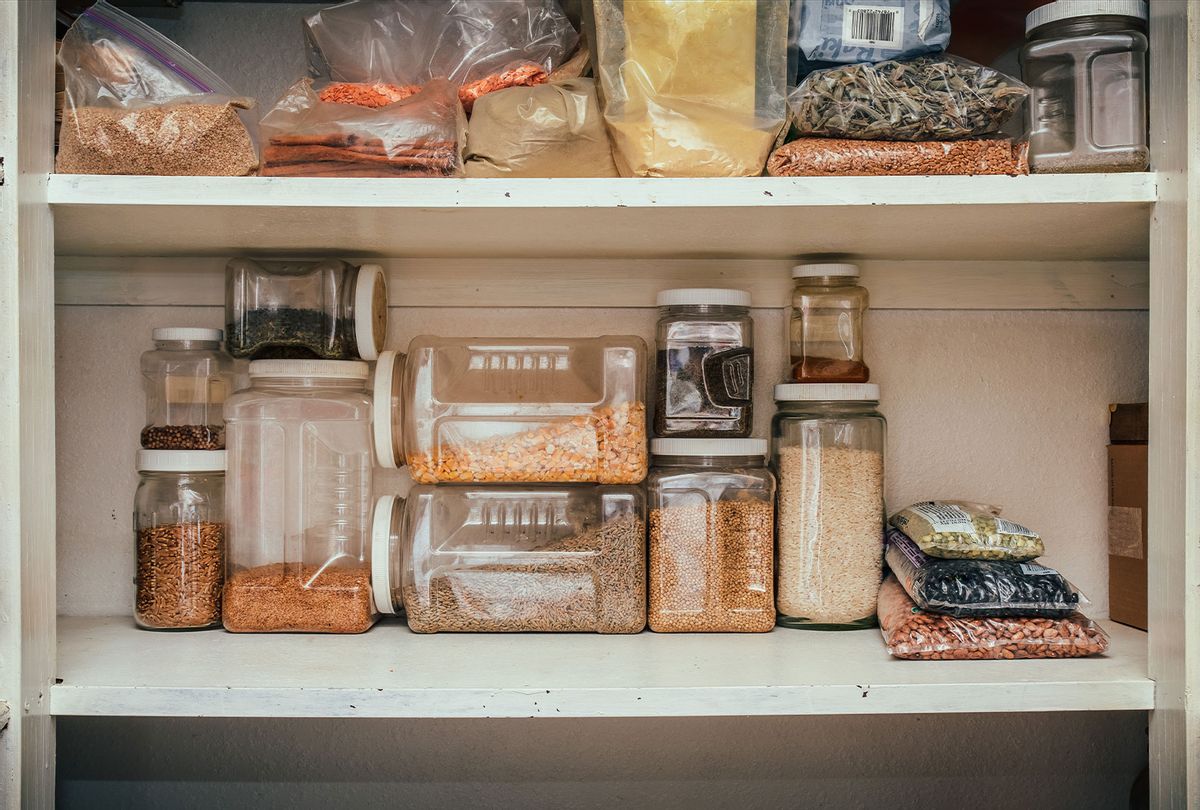The crisp and cool air of fall is beckoning us to seek comfort within our kitchens and cook-up an assortment of warm meals. Think oven roasted veggies, garlic and herb mashed potatoes, bone broth stew, apple tarte tatin and plenty more. Long gone are the refreshingly cool flavors of summer — they are just so last season. Now, as we teeter-totter between cool mornings and warm afternoons, it's time to revitalize our kitchen pantries with an assemblage of earthy and spicy aromas.
But stocking up a kitchen pantry, especially during the turn of a season, is no easy feat. Where does one start? Which specific items should be included and which ones should be dumped? What are some ways to keep a pantry organized? How much is too much?
RELATED: The secret ingredient in this magical grilled cheese is pumpkin butter
To help make the process easier — and a little fun — Olivia Roszkowski, chef-instructor of Health-Supportive Culinary Arts at the Institute of Culinary Education, offers a few tips and tricks on how to efficiently build the perfect fall pantry.
Step One: Evaluate your pantry and its contents
Get ready to dive into the deepest and most inner crevices of your pantry. Roszkowski says the first and most important step is to thoroughly evaluate all your stocked items and create an inventory. Don't be afraid to get messy with this step and disassemble all the contents inside your pantry, if need be.
"You're going to use what you have, which [is] like the beauty of it," Roszkowski says. "So, I would say the first step would be… making a list of things you might want to replenish."
Versatile items, such as oils, spices, legumes and grains, can be re-worked in fall dishes. And so can traditional summer ingredients. Think twice before tossing out your olive roasted red peppers and canned corn from last season — they'll come in handy for autumnal themed stuffed peppers and hearty chili.
Step Two: Understand what can (and can't) go into a pantry
A kitchen pantry is a small and enclosed space that should not under any circumstances include foods prone to moisture or leakage. Things like butter, jams, condiments and mayonnaise are better suited for the refrigerator rather than the pantry.
Pungent and odiferous foods, such as vinegars and fermented staples, should also be kept out of the pantry, according to Roszkowski. Their strong smells tend to linger in a confined space and can easily interfere with the flavorings of other fresh ingredients.
Fresh produce should also stay out of the pantry and instead, be kept in the refrigerator or a designated counter-top bowl. Vegetables such as potatoes and sweet potatoes, however, can be safely stashed away in your pantry. To help preserve their freshness, Roszkowski advises putting them in mesh baskets to help maintain some air-flow. There's truly nothing more repulsive than opening a pantry that reeks of rotten potatoes.
Overall, Roszkowski's take-away message is to continuously monitor your pantry and make sure there aren't any possibilities for unexpected surprises. Remember, a fresh pantry also allows for fresh meals.
Step Three: Brainstorm a list of items to add
Now that you know what items are already in your pantry, it's time to create a list of additional items to purchase and include. Roszkowski recommends building your list around specific recipes. For Roszkowski, the South Asian dish of khichuri is a popular meal within her household. Thus, her own pantry is filled with ample amounts of turmeric, rice, lentils, onions and potatoes.
Fall meals, in general, rely heavily on anti-inflammatory spices, oils and root vegetables. For spices, Roszkowski suggests adding these fall-must-haves to your list: cinnamon, clove, ginger powder, cardamom, all spice, chili powder and cumin.
And for oils, Roszkowski offers a few unconventional options to try.
"I would add in a really nice roasted nut oil," Roszkowski says. "I really like walnut oil, pistachio [and] macadamia — you could just drizzle that or make salad dressings."
For the more ambitious home-cooks, Roszkowski recommends stocking up on chili oil, chocolate oil and pumpkin seed oil, which features a bright green hue and an extraordinary nutty taste.
Step Four: Go out and purchase those must-have items
This step is pretty self-explanatory. After completing the required prep-work, head on over to your local super market and stock up! To avoid over-spending and purchasing unnecessary items, be sure to carry your handy list with you.
Step Five: Organization is key
After a successful trip to the market, you've finally returned home with bags of fresh seasonal ingredients. Now what?
Don't haphazardly toss these new items into your pantry. Your kitchen pantry is not a disposable ground but rather, a useful and vital storage space.
Instead, Roszkowski recommends stashing away dry ingredients in clear bins, containers and jars, which aid in assessing their freshness. To distinguish between spices, Roszkowski suggests labeling them in clear jars. Oils should also include a dated label to avoid spoiling. Flours, nuts, seeds and powders should be included in clear containers. Potatoes and onions are best kept in baskets.
"I think, also, people shouldn't be scared to switch it up," Roszkowski says. "I think it's fine to move things around a little bit as you go through."
Roszkowski recommends grouping items by purpose and need. For example, canned items and oils occupy one shelf, spices occupy another while baking supplies make up a separate shelf. Pantry items can also be grouped by liquids and dry ingredients — this particularly helps to avoid any future mishaps.
Step Six: Revel in your hard work
The last but most essential step is to give yourself a big pat on the back. You finally put together the most efficient and well-stocked kitchen pantry on the block! Reward yourself with a homemade fall meal and get ready to flaunt your pantry the next time guests are over for dinner.
More stories about pantry staples:



Shares